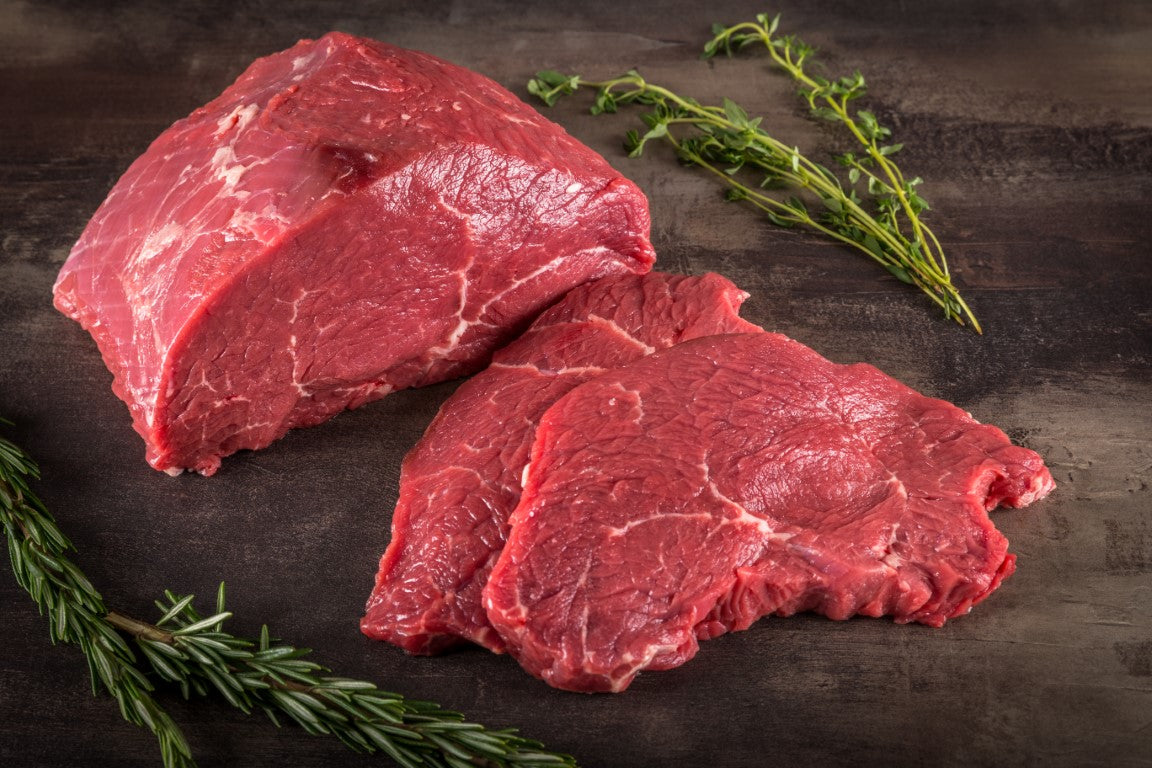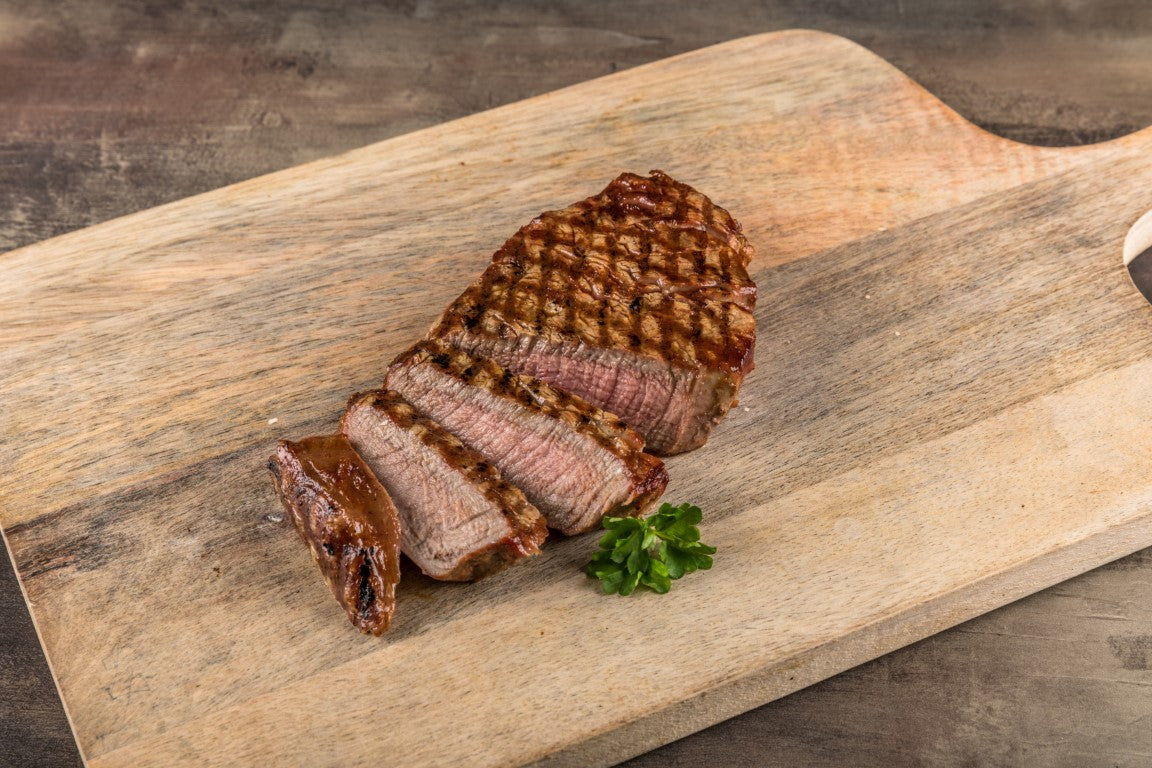Sirloin steak from grass-fed beef
Sirloin steaks are a very popular cut, especially for those on a low-fat diet or who don't like chunks of fat on their plates. The rump is a muscle from the leg that's used very little, making the meat tender. It's ideal for pan-frying .
We use only meat from our own cattle or from our partner farms. Dry -aging the meat on the bone ensures outstanding quality and a distinctive flavor.
Beef rump – The cut

The beef rump , also called the "flower ," is cut from the leg and is between roast beef and boiled beef. Because it requires minimal mechanical stress, the meat remains relatively tender. We cut the rump steaks from the so-called steak rump , the thickest part of the rump.
Raising our cattle
When you buy rump steaks from us, you'll receive meat exclusively from our own livestock and from our partner farms, all located near us in the Black Forest. The animals are raised exclusively on our own farm's feed.
Our motto is: If the animal is well, the people are well. Our short transport routes of a maximum of 60 km protect both the livestock and the environment. Stress-free slaughter directly on our premises is an important component of the high quality of our steaks.
Dry-aged beef – quite normal for us
What's trendy today is a tradition for us: aging meat on the bone. This method, also known as dry aging , enhances the meat's natural flavor and prevents it from becoming too acidic. Due to the loss of liquid during aging, the beef loses up to 50% of its weight, but remains juicy and flavorful after preparation.
Preparation of rump steak
How to prepare rump steak on the grill – in 6 steps
Grilling works best with a grill that has a lid, regardless of whether it's charcoal, gas, or electric.
- Prepare two zones on the grill:
1st zone: As high heat as possible;
2nd Zone: Only the indirect heat of Zone 1 - Take the steak out of the fridge, add salt and after 2-3 minutes place it in the hot zone so that it is seared on all sides and develops roasted aromas.
- Place the steak in the indirect zone and regulate the heat of the hot zone (remove coals, turn down gas/electricity).
- Insert the core temperature probe into the steak.
- When the steak reaches the desired core temperature , remove it from the grill and let it rest for 2-3 minutes.
- Carve the steak across the grain and serve on warmed plates.
Prepare rump steak in the pan – In 5 steps
Basically, the technique isn't much different from grilling. It's important to use a heavy, solid pan.
- Place the pan on the stove and preheat without oil for 2-4 minutes at maximum heat, while preheating the oven to approximately 120°C.
- Take the steak out of the refrigerator, season with salt, and add about 1 tablespoon of oil to the pan. Once the oil is hot, sear the steak on all sides until it acquires a nice roasted flavor.
- Then place the steak in the oven and insert the core temperature probe into the steak.
- When the steak reaches the desired internal temperature , remove it from the oven and let it rest for 2-3 minutes.
- Carve the steak across the grain and serve on warmed plates.
Measuring core temperature on rump steak
To cook the steak perfectly, we recommend using a digital probe thermometer. Insert the tip of the probe into the center of the meat to measure the core temperature .
Tip: First place the probe lengthwise on the piece to determine the necessary penetration depth, and then insert it into the meat up to the marked point.
Sirloin steak core temperature
The optimal core temperature depends on your personal taste. Here's an overview:
| Designation | Description | core temperature |
|---|---|---|
| Blue | Roasted on the outside, cool and raw on the inside | 42 °C |
| Rare / Bloody | Very reddish in the core | 48-52 °C |
| Medium-Rare | Slight discoloration of the meat, but still very reddish | 52-56 °C |
| medium | Clearly visible change in the color of the meat, but a red tone can still be seen. | 56-60 °C |
| Well Done / Through | Meat almost completely recolored, almost no red tone visible. | 60-64 °C |






 Aus eigenem & Partner Viehbestand
Aus eigenem & Partner Viehbestand Dienstags und Donnerstags Versandtag
Dienstags und Donnerstags Versandtag

